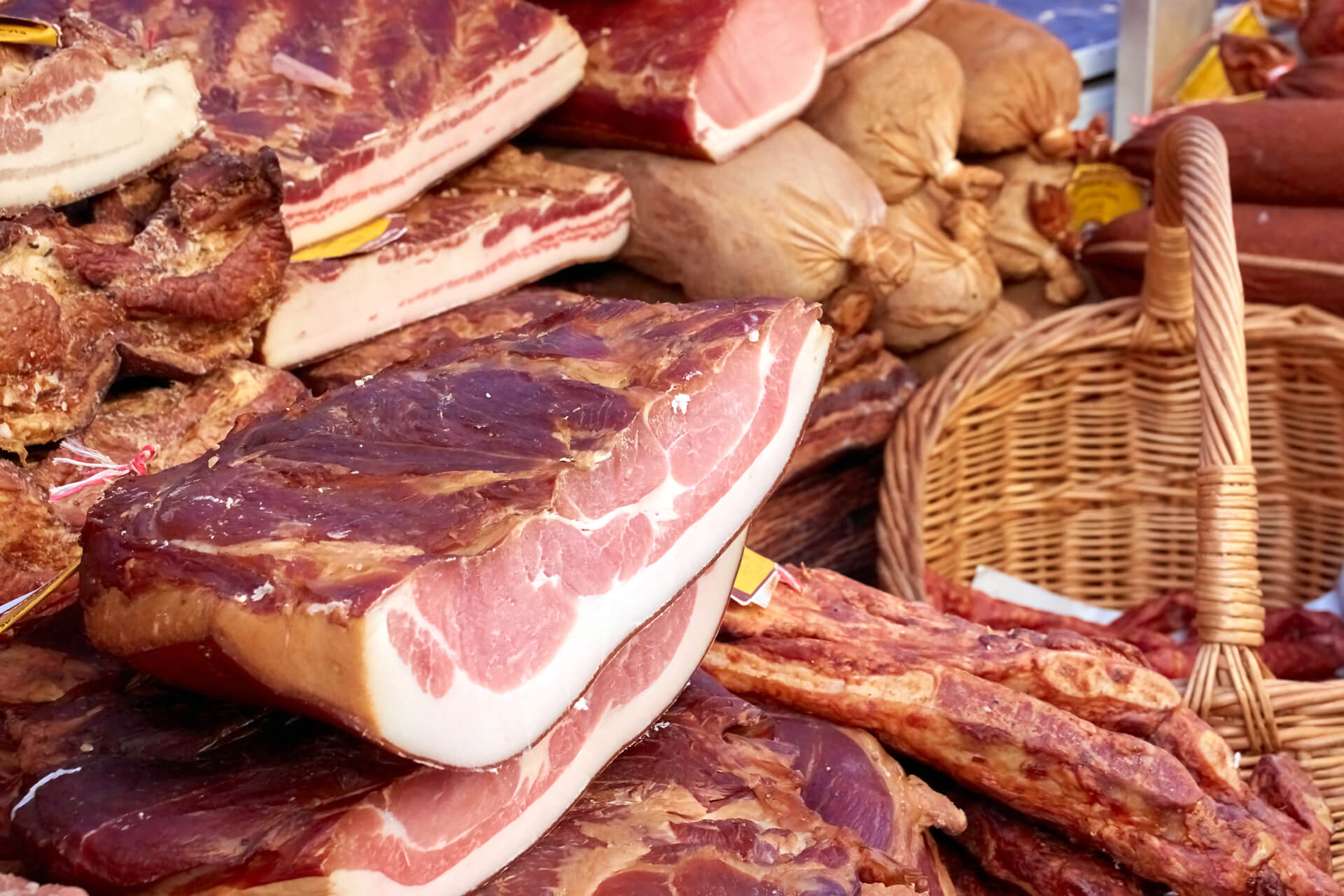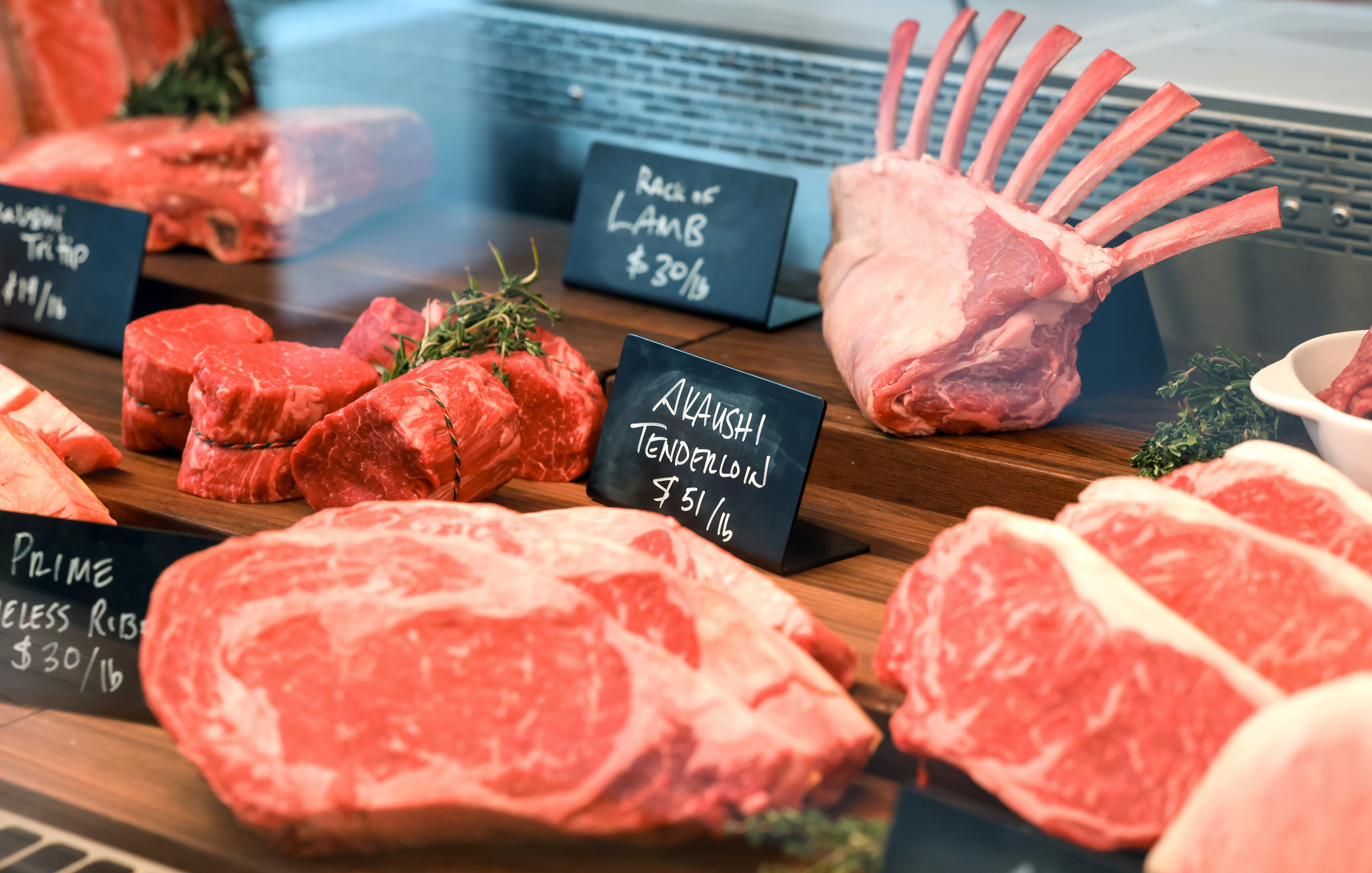Go To Bagley Farms Meat Market Edwardsville IL for Farm-Fresh Meat and Specialty Cuts
Go To Bagley Farms Meat Market Edwardsville IL for Farm-Fresh Meat and Specialty Cuts
Blog Article
Discover the Art of the Butcher's Cut in a Modern Meat Market
In the ever-evolving landscape of modern-day meat markets, the butcher's cut has transcended its conventional roots, combining old-time workmanship with contemporary practices. bagley farms meat market edwardsville il. Today's butchers are not merely cpus of meat; they are well-informed craftsmens who emphasize sustainability and moral sourcing. Their knowledge in selecting and preparing cuts customized to specific culinary requirements offers an unequaled dining experience. Yet, what really sets the modern-day butcher apart is their ability to build a much deeper connection in between customers and the origins of their meat. Just how do these masters balance tradition with technology, and what ramifications does this have for the future of meat consumption?
Development of Butchery Methods

The mid-20th century saw butchery methods even more refined by scientific insights into muscular tissue biology and meat aging, boosting both inflammation and preference. Technologies like vacuum packaging and refrigeration extended item shelf-life, enabling butchers to diversify offerings and improve quality assurance. This duration likewise marked the rise of customized equipment, such as band saws and meat slicers, which enhanced precision and performance in meat handling.
Electronic systems now help in monitoring animal provenance and maximizing cuts to meet details customer choices. Furthermore, a revival in artisanal butchery has actually emerged, blending typical skills with contemporary knowledge to provide to consumers seeking moral and lasting meat options.

Understanding Meat Cuts

Recognizing the intricacies of meat cuts is essential for both butchers and customers looking for high quality and value. Each cut comes from a various component of the animal, passing on unique tastes, appearances, and cooking methods. Proficiency of these distinctions not just boosts culinary experiences but additionally makes the most of the utility of each carcass. For butchers, specific cuts show skill and regard for the craft, ensuring minimal waste and optimum yield.
The main groups of meat cuts include primitive, sub-primal, and retail cuts. Butchers then break these down even more right into sub-primal cuts, before lastly producing retail cuts offered to customers, like ribeye or tenderloin.
Comprehending muscular tissue composition is vital; muscle mass used a lot more regularly by the animal have a tendency to be my response harder and are best matched for slow cooking approaches, while less-used muscle mass, like those located in the loin, are more tender and suitable for barbecuing or roasting. Knowledge with these distinctions equips consumers to make enlightened selections, improving their cooking undertakings.
Selecting Quality Meat
Choosing the best meat news involves more than just picking a visually appealing piece from the display. The art of selecting quality meat calls for a critical eye and expertise of certain characteristics that represent freshness and excellence. Firstly, focus on the shade; beef must have a brilliant, cherry-red shade, while lamb ought to display a soft pink tone, and pork a pale pink. This suggests the meat is fresh and hasn't been subjected to oxygen for as well long.
Secondly, consider the marbling, which describes the white flecks of fat within the muscular tissue. Appropriate marbling is a key sign of tenderness and taste, as it melts during food preparation, improving the meat's juiciness. Remember, greater marbling frequently associates with superior top quality cuts, such as USDA Prime.
Structure is an additional critical variable; meat should really feel firm to the touch, not slimed or extremely soft. Furthermore, be conscious of the fragrance. Fresh meat needs to have a clean, neutral smell, devoid of any kind of sour or repulsive odors.
Combining Cuts With Food Preparation Methods
Efficiently pairing cuts of meat with the appropriate cooking approaches is vital for attaining optimal flavor and appearance. Various cuts vary in tenderness, marbling, and connective cells material, each requiring specific techniques to unlock their capacity. For circumstances, tender cuts like filet mignon and ribeye, with their inherent marbling, benefit from high-heat, quick-cooking techniques such as cooking or pan-searing. These techniques improve the meat's all-natural tastes and ensure a juicy coating.
Conversely, tougher cuts like brisket and chuck roast are rich in collagen, which breaks down into gelatin when cooked gradually. These cuts are ideal for braising or slow roasting, allowing the meat to soften over time and develop deep, complex flavors. Similarly, cuts such as brief ribs and pork shoulder prosper with slow-cooking approaches, where expanded cooking times change their robust textures into delicious recipes.
Lamb shanks and oxtail, which call for extended cooking to soften, are excellent prospects for stewing or slow simmering. These approaches coax out abundant, hearty tastes while preserving wetness. By understanding the one-of-a-kind features of each cut, cooks and article home cooks alike can boost their cooking creations, guaranteeing each meal is both pleasing and unforgettable.
The Butcher's Function Today
Browsing the evolving landscape of the contemporary meat market, the butcher's role today prolongs past mere preparation of cuts. Contemporary butchers are culinary artisans, instructors, and supporters for sustainable methods.
Along with crafting exact cuts, butchers now engage straight with customers, using cooking advice and tailoring options to suit private demands and preferences. Their knowledge in meat aging, marbling, and taste profiles empowers customers to make enlightened decisions, enhancing their culinary experiences. This tailored service exemplifies the butcher's progressing duty as a trusted advisor in the kitchen area.
In addition, butchers are pivotal in reducing waste, using entire pets to produce diverse products such as sausages and supplies - bagley farms meat market edwardsville il. This comprehensive approach not just respects the pet but likewise straightens with modern sustainability objectives. In this way, the contemporary butcher symbolizes both custom and advancement, adjusting to an ever-changing market while preserving the creativity and stability of their craft

Final Thought
Mastery in recognizing diverse meat cuts and high quality indications empowers butchers to supply informed referrals, aligning certain cuts with optimum cooking techniques. By recognizing historic practices while accepting modern needs, the butcher's role stays essential in today's sophisticated meat market.
Report this page